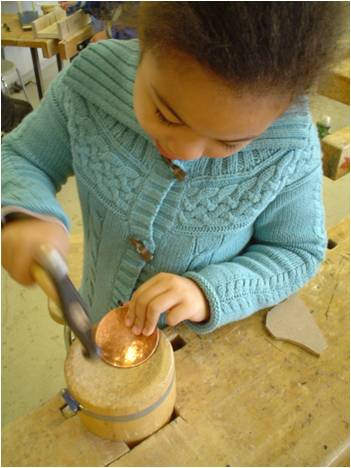Examining Design and Craft Education in Iceland. Curriculum development and present situation
DOI:
https://doi.org/10.7577/formakademisk.110Keywords:
Design and Craft (Hönnun og smíði), Sloyd, pedagogy, educational research, evaluation, The Icelandic National CurriculumAbstract
This article reports a research project that examined the background, status, understanding of and attitude to Design and Craft education (Hönnun og smíði) in Icelandic elementary schools. The main conclusions showed that certain aspects of Design and Craft need to be further defined in order to strengthen its position in the school system. Concepts were not clearly defined and research on Design and Craft education was lacking. The participants’ attitudes to Design and Craft were positive and the subject was popular amongst students. However, results showed a lack of understanding of the differences between basic terms such as Art, Design and Craft. All of the interviewees thought Design and Craft were important subjects for individualized learning and wanted to give them a more prominent role in general education. Design and Craft education in the Icelandic National Curriculum has not been fully realised. The research identified that schools have not allocated extra hours for the subjects, even though local authorities were supportive and flexibility existed in the time schedule. Lack of finances was, furthermore, not a hindrance to increased Design and Craft education.

Downloads
Published
How to Cite
Issue
Section
License
Authors who publish with this journal agree to the following terms:
- Authors retain copyright and grant the journal right of first publication with the work simultaneously licensed under a Creative Commons Attribution 4.0 License that allows others to share the work with an acknowledgement of the work's authorship and initial publication in this journal.
- Authors are able to enter into separate, additional contractual arrangements for the non-exclusive distribution of the journal's published version of the work (e.g., post it to an institutional repository or publish it in a book), with an acknowledgement of its initial publication in this journal.
- Authors are permitted and encouraged to post their work online (e.g., in institutional repositories or on their website) prior to and during the submission process, as it can lead to productive exchanges, as well as earlier and greater citation of published work (See The Effect of Open Access).
- The author(s) must manage their economic reproduction rights to any third party.
- The journal makes no financial or other compensation for submissions, unless a separate agreement regarding this matter has been made with the author(s).
- The journal is obliged to archive the manuscript (including metadata) in its originally published digital form for at least a suitable amount of time in which the manuscript can be accessed via a long-term archive for digital material, such as in the Norwegian universities’ institutional archives within the framework of the NORA partnership.
The material will be published OpenAccess with a Creative Commons 4.0 License which allows anyone to read, share and adapt the content, even commercially under the licence terms:
This work needs to be appropriately attributed/credited, a link must be provided to the CC-BY 4.0 licence, and changes made need to be indicated in a reasonable manner, but not in any way that suggests that the licensor endorses you or your use.



